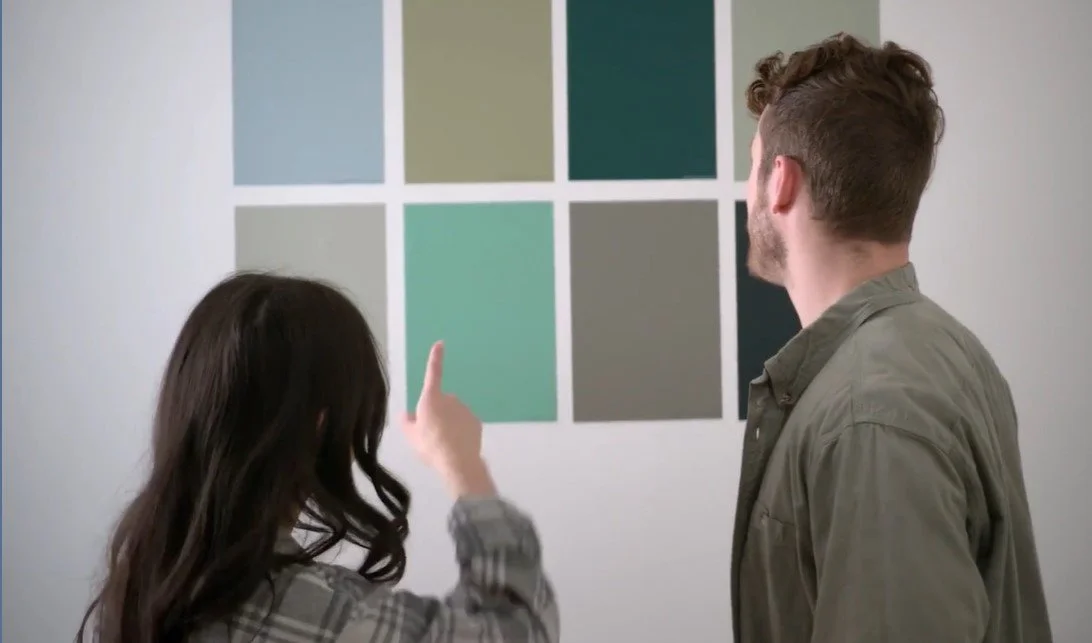Paint That Spare Room
Let’s say you’ve decided to finally do something about that troublesome room in your home. You know, the guest room you’re trying to create from your college kid’s bedroom, or the study that’s been ignored far too long. Or you’ve just moved to a new place, and you want a fresh start with a fresh look. Often, the place to begin with any major decorating project is with painting the walls.
And that’s the thought that makes many people shrink back in fear: hang a few large pictures on the wall and hope that the world ends before anything needs to be done about it.
We have this response for good reason. For many people, choosing paint color is a huge commitment, and painting an entire room - whether you do it yourself or hire a professional - can be an expensive prospect. So you don’t want to choose a color and then, when the furniture is all in, realize that it was a hideous choice.
That happened to once to someone we knew. No, actually it happened twice, which makes it even more embarrassing for her to admit. And both times (how she cringes to admit this!) it happened with pink and blue. Both times, she thought she was painting one room a pale near-white with just a hint of pellucid robin’s egg blue, and the other would be a pale near-white with just a blush of rose, like an evening sky in late summer.
In the first case, she did the painting herself, and she ended up with a place that looked like she was preparing for twins, a baby girl and a baby boy. (she was not, at the time, with child.) All she needed were some cutouts of fluffy lambies for the walls and a couple of bassinettes.
The second time it happened, she hired a painter, a great guy who grew up in Jamaica (the island nation, not the neighborhood in Queens). She left for the days he painted, and when she came back, he said, a bit dubiously, “It reminds me of my country.” And indeed, it looked all pink sand and clear blue waters - lovely, but not really what she’d had in mind. This time, all she needed was a tiki bar and a snorkeling outfit.
The most important thing this woman learned from these experiences was that wall color always looks less strong, less intense on the swatch than it does on the wall. Once you paint an entire wall any color, that color takes possession of the room. Paint all four walls that color, and you create a little bubble of color - which is great, if you love the color. But the color reflects back on itself, multiplying its strength, and that’s something that’s hard to imagine when you’re looking at a tiny one-inch swatch.
The second thing to keep in mind is that many factors will effect how the color looks in the room itself, when it’s on the wall. The other colors in the room, of course, such as the color of furniture and floor, but also the light in the room, will make the wall color appear different. And the light in the room, remember, will change throughout the day - the more natural light you have, the greater the variations in color during the day.
With the usual ridiculously tiny paint chips, it's impossible to tell what a color will look like. Those are tiny paint chips, providing no help whatsoever. Thank heavens for larger peel-and-stick samples from companies like Samplize.
And even the colors outdoors will effect the wall color. A friend once had a study that had two small windows facing out onto an ivy-covered rock garden (yes, it was as idyllic as it sounds) and the whole room appeared green even with a bright white wall paint. Do your windows face a red-brick wall? Then probably something in the brick-red family will look overpowering on the walls.
The most recent time my friend painted the walls of her apartment, she invested in tiny samples of the colors she was considering and created a wall of samples. (Maybe she learned something from those traumatic blue and pink experiences).
Most paint companies offer small tester-sizes of just a few ounces, and these can give you enough paint to get the idea, and to compare one shade with another on the wall itself. Glidden has two-ounce trial sizes that come with a built-in brush and enough paint to cover three square feet. Valspar offers samples which will cover 4' x 4' and come with a roller tray, mini-roller, and coordinating paint chips.
If you’re the kind of person who loves heirloom tomatoes and other throwbacks, you may want to try out Milk Paint, a chemically safe, historic paint that’s often used in furniture restoration and in creating an authentically historic look to a home. These also come in sample sizes of the powder you mix to create the paint, available from The Old Fashioned Milk Paint Company.
Samplize has large peel-and-stick samples of colors from the big paint companies. This is an excellent solution to the too-small paint chip dilemma. Another solution comes from a Nashville, Tennessee company called Small Wall. They make one-foot square panels from a non-absorbent material, with an adhesive back. Using your own paint sample, you paint the square, let it dry, then stick it to the wall: the very wall where you’ll be painting once you get your courage up. The adhesive back won’t damage the wall when you pull it off, and the surface is designed to give you the same color that the wall will. This way, you can try "Steaming Sun" in the living room one day, in the study the next, and you can try it side-by-side with "Broken Heart" or "Luscious Lights."
So maybe there's hope for us after all. If we can find a way to sample paint colors on the wall, maybe next we can find a solution to climate change - and in the New Year, we can jolly well get on with it and finish decorating our glaringly-in-need-of-decorating spare room.
Thank you to author Sarah Van Arsdale for this wonderful post, which she penned a few years ago. We thought it was still timely and interesting for Design2Share readers.

